Notes:
In this piece I will refer mainly to the British use of the Lee-Enfield as it was predominant. In that I include the Empire as it was part of Britain for the majority of the time the Enfield was the British main service rifle. I shall only refer to other nations’ use in passing as that would involve covering most of world history from 1910 onwards.
British nomenclature is a specialist field and there are a few notes you should be aware of for reading this article, while most English speaking readers with be aware of these I will detail them in case you are unaware of their meanings or they are poorly translated:
No. : Number, abbreviated. Used to describe a series of rifles in this case
Mk: Mark, the sub model of a series
‘*’ or ‘star’: Used to denote minor changes that do not justify a new ‘Mk’ designation.
(T) : Telescopic
(TH) : Telescopic sight, heavy barrel
I should also make clear that while the P13s and P14/17 rifles are Enfields, they are quite unrelated mechanically. I have referred to the SMLE’s predecessor only as the Lee-Metford, or MLE as I am not intending to go into the sub-types in this article. Maybe another time.

Lee-Metford MkII. Wikipedia.
The story begins
The Lee-Enfield was the main British service rifle from 1907 to the 1950s, born out of the arse-kicking the British Army received during the Boer war where the Lee-Metford (or Magazine Lee-Enfield) did not perform to expectations against the Boer Guerrillas armed with Mauser rifles.

P13 at RIA. Although an Enfield, this is not related to the Lee-Enfield series.
A replacement was needed, quickly. The War Office started investigations into the options, including adopting a Mauser-style rifle (which became the P13 eventually) and shortening the MLE to what, at that time, was considered a carbine length and issuing it as a standard rifle to all troops.

SMLE No. 1 MkI. Rare as hen’s teeth.
There were a couple of early renditions of the SMLE but these were not widely issued, however on the No.1 MkIII they finally settled on one of the classics of the 20th century. A bold move, a short rifle to be issued to all troops from Infantry to Cavalry, Artillery and Engineers to simplify logistics. A far cry from many countries where all of these cadres had their own specialist rifle or carbine. The stubby, snubbed nose appearance given to the rifle by the nose cap, foresight guard and bayonet lug combined contrasts quite strikingly with the slender, elongated fore-ends of the French Lebel and the German Gewehr 98. The detachable magazine and multiple piece stock also means a greater level of modularity for repairs and personalisation, such as was available.

The classic SMLE. Rifle No. 1 MkIII
Military service
This was ready for WWI where it served very well in the filthy confines of the trenches. Its rate of fire was so terrific that in the early stages of the war in the west, German soldiers overestimated the number of machine guns in use by the British.
During the war, it was supplemented in the field by a simplified version, the No.1 MkIII*, which sped up production in the pressured wartime economy and the P14, a development of the P13 with lessons from trials learned and applied. During times of need, old MLEs were also occasionally pulled out of storage.

P14 Enfield. Basically a better thought through, short Mauser.
After the war, the SMLE was retained despite the moves to replace it pre-war, though some features such as an aperture rear sight were implemented in the 1920s. Although these improvements were great they were expensive and as a result Britain and the Empire went into WWII with exactly the same rifle as they went into WWI with.
During WWII, the No.4 Lee-Enfield series was introduced, though it was mainly used in Europe and didn’t reach the furthest ends of the conflict in the Far East. This featured an aperture rear sight at last! Different marks featured slight alterations in the rear sight configuration depending on location of manufacture (Long Branch, Savage and British models all varied slightly) and model. However the aperture sight went down well and the rifle was popular. Unlike the SMLE, the barrel is not in contact with the woodwork all the way down its length which improves barrel harmonics and accuracy as a result. The receiver and the woodwork is also lighter as well as easier to manufacture, all of which made it an ideal wartime improvement.

Lee-Enfield No.4 MkI
An even further lightened, shorter version in the form of the No.5 Mk1 was used in the Far East. Colloquially known as the ‘Jungle Carbine’, it looks much like a shortened, sporterised No4 with an enlarged foresight guard and muzzle flash compensator. When you look at it closer, you also see the rubber buttplate and integrated sling swivel. However this rifle was discontinued only three years after its introduction and phased out due to issues with a wondering zero, combined with aggressive recoil and large muzzle flash. It still managed to serve in Korea and Malaysia before seeing the end of British service entirely, though it was officially outlasted by the No.4 Mk2 which served right up until the replacement by the Self-Loading Rifle.

No. 5 Mk 1 ‘Jungle Carbine’.
Even past the introduction of the 7.62 round and the semi-automatic rifle, the Lee-Enfield lived on in frontline British service in the form of the L42 Sniper rifle. SMLEs had been used as sniper rifles since WWI, when standardisation for such modifications was non-existent, and No.1 MkIIIs and No.4 MkIs had both been used officially in both world wars as well as Korea and a number of smaller conflicts.

L42A1 Sniper rifle. Note the cut-back stock and the magazine shape change to take the new round.
Many L42s were apparently converted from No.4 MkI (T) rifles, themselves chosen from the factory for their accuracy. They were converted to take the new magazine, re-chambered for 7.62 and their No. 32 scopes modified for the new cartridge. These served as the British Army’s sniper rifle until the introduction of the Accuracy International L96 in the 1990s.
Other countries have continued to use SMLEs right into the 21st Century. Notable examples include India (especially with the Police), Canada (with the Rangers) and Nepal. They are also still prized in Afghanistan, where open terrain and long distances are in some ways better suited to the Lee-Enfield than modern intermediate-calibre assault rifles.
There are also a number of specialist sub-variants of the SMLE, which I will cover at a later date as this is intended as a VERY brief overview of the rifle’s history and development before I start covering the multiple airsoft builds going on at the moment.
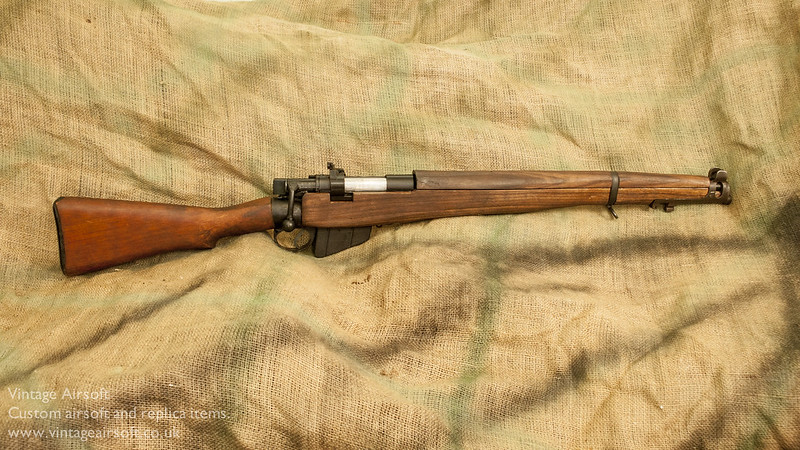
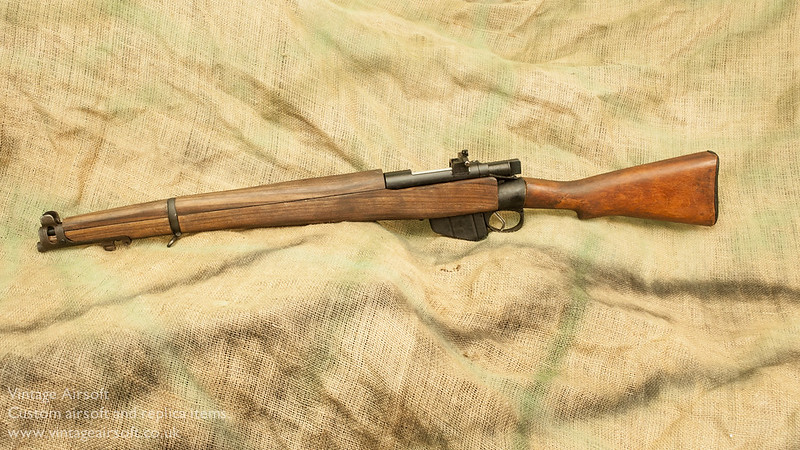
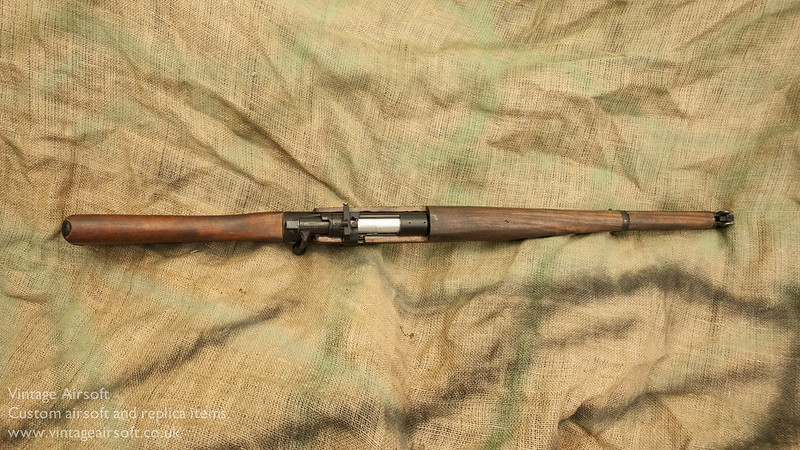
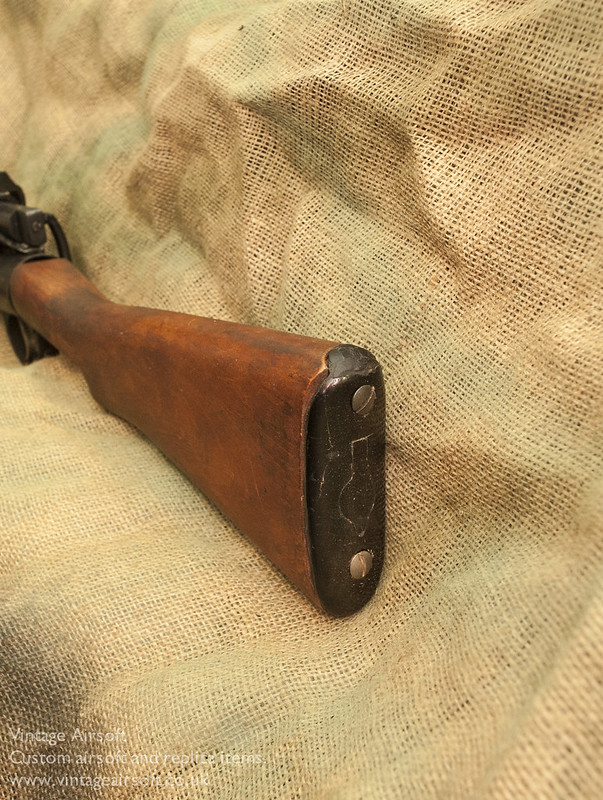
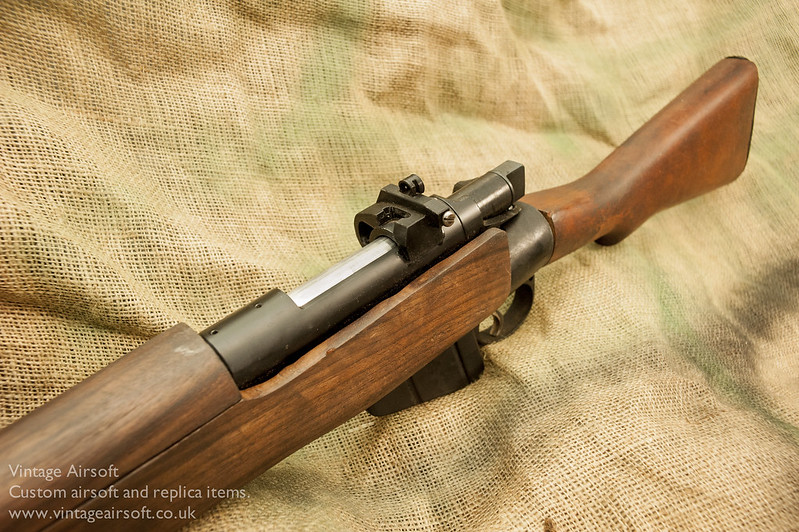
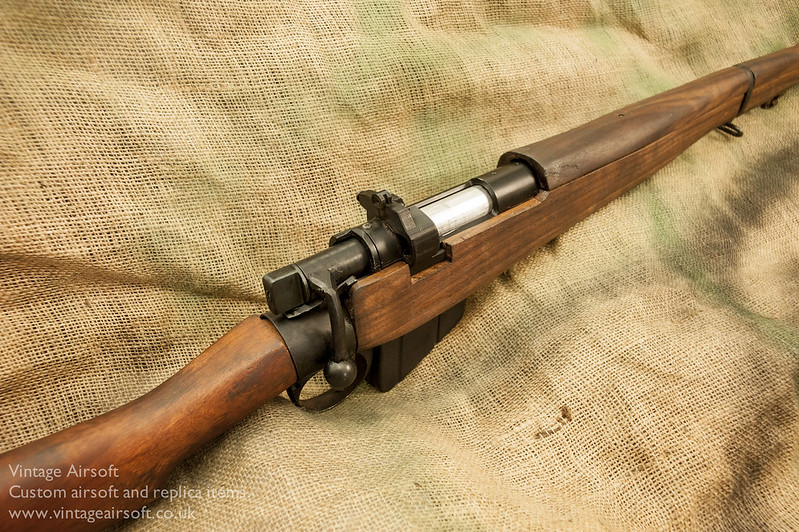
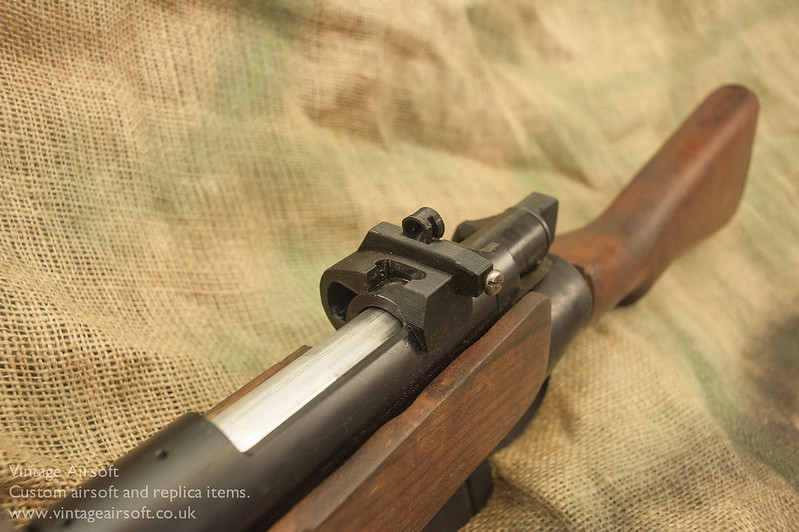
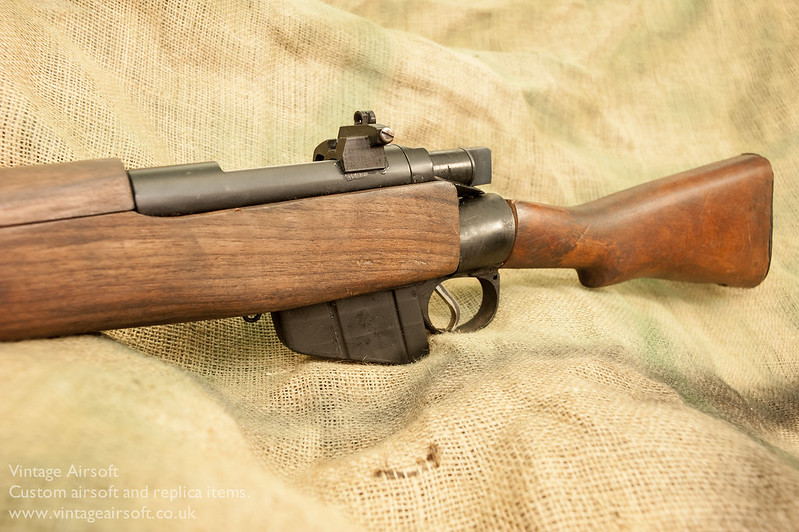

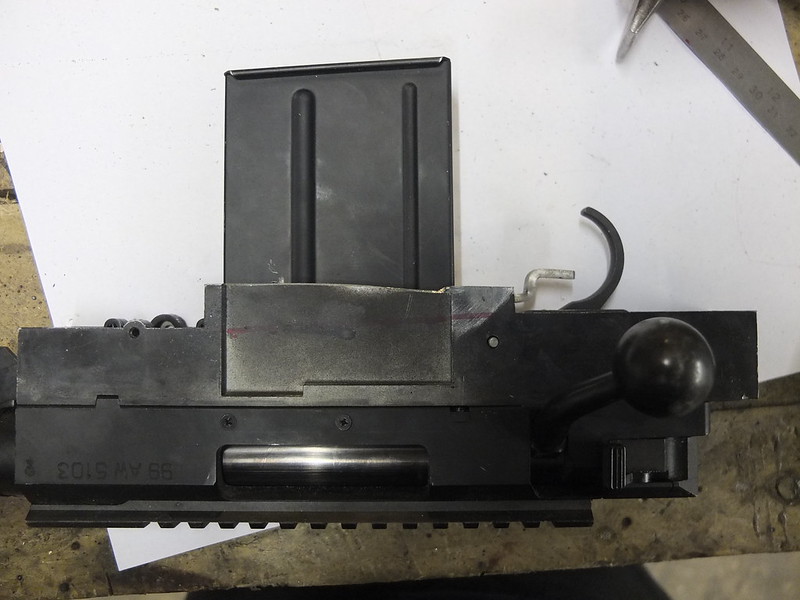
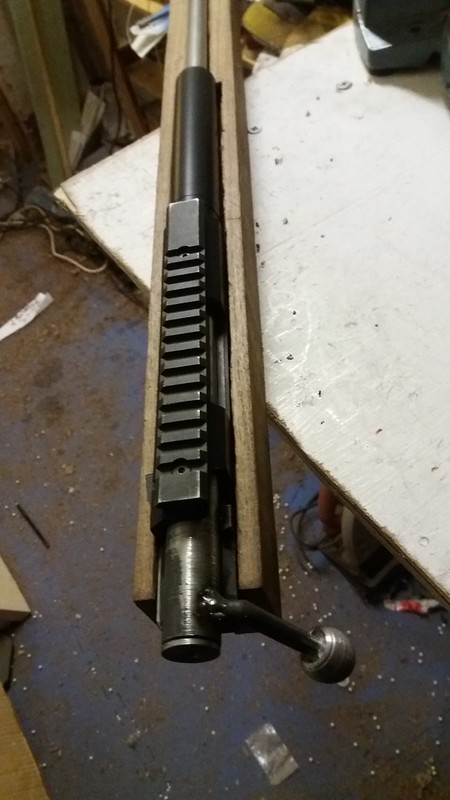

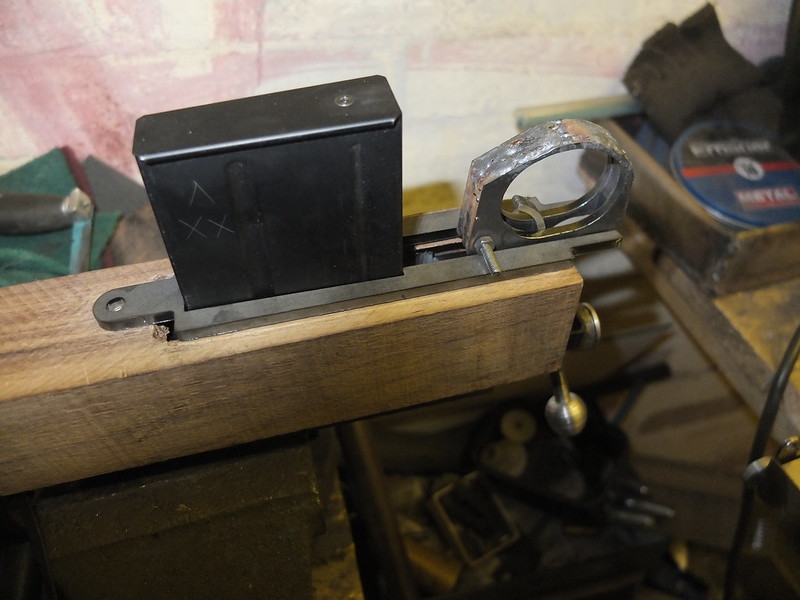
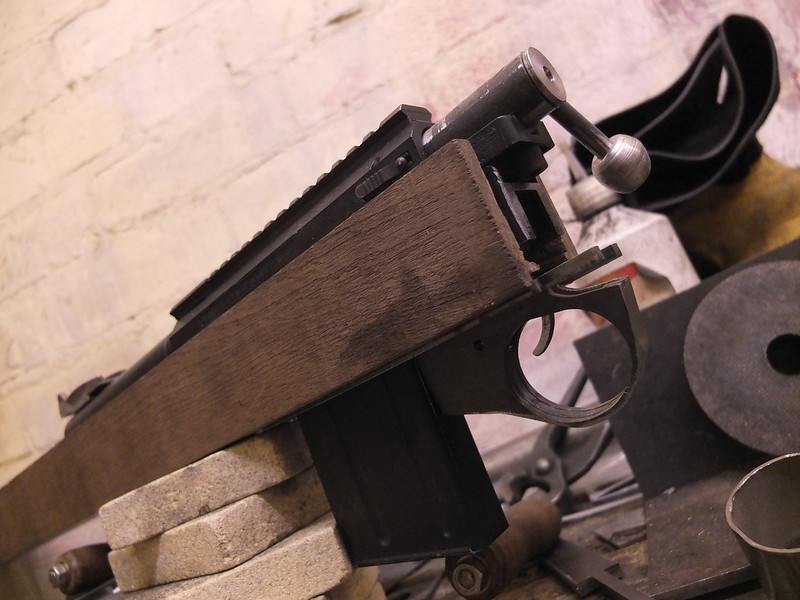
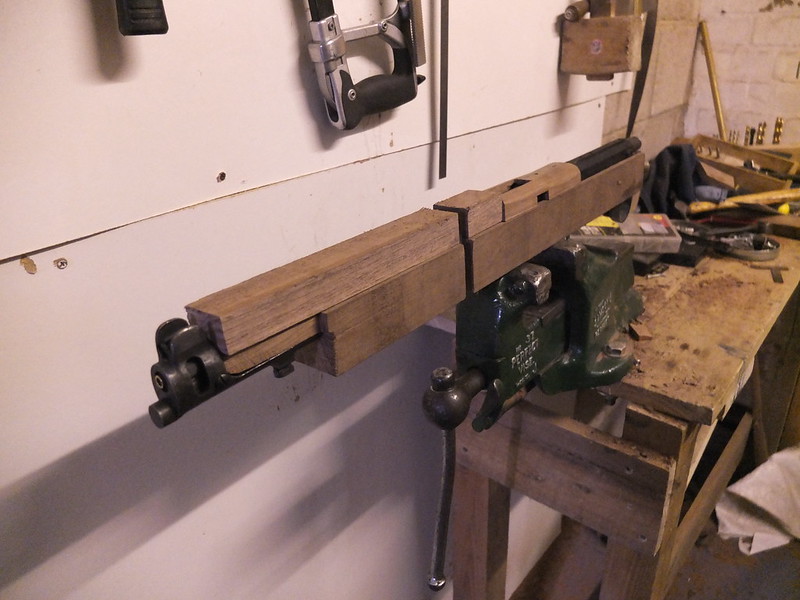















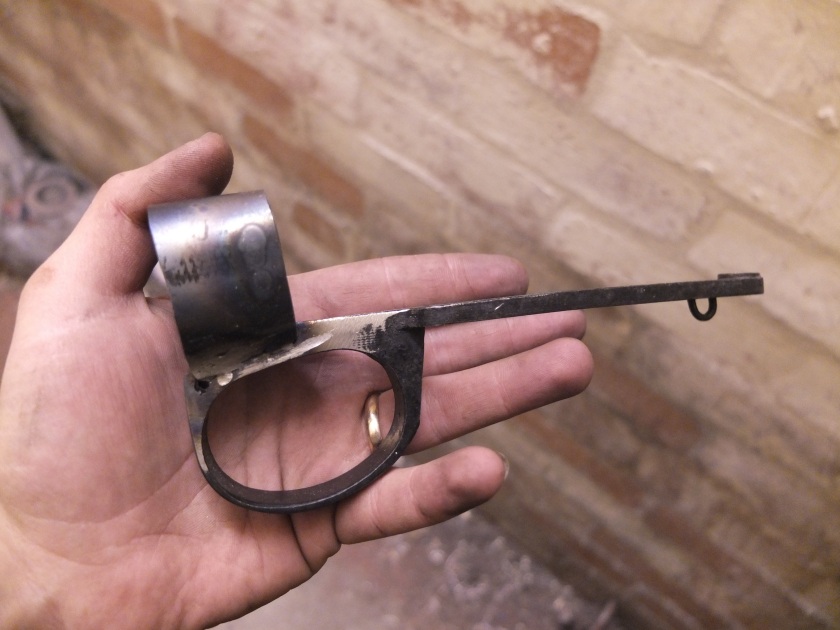
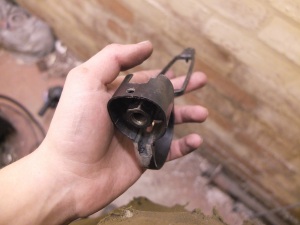




















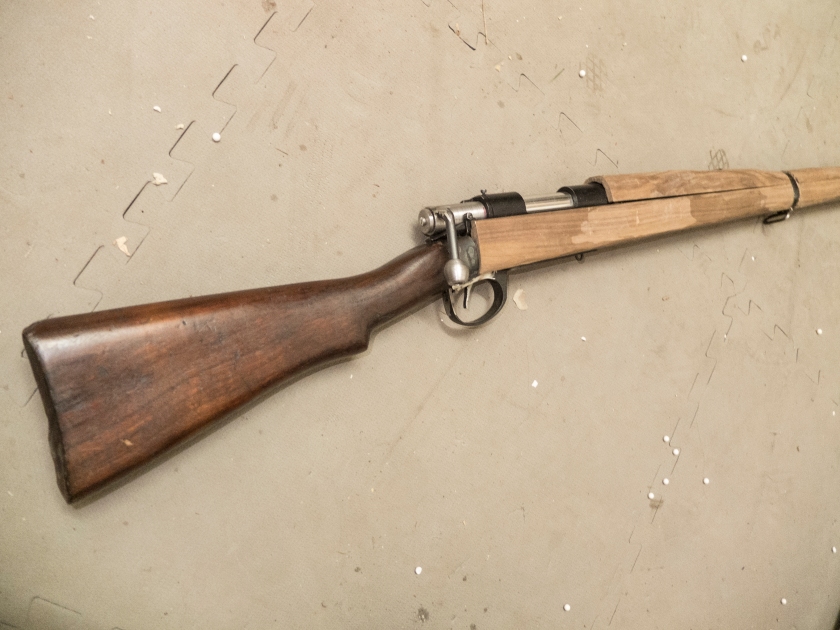

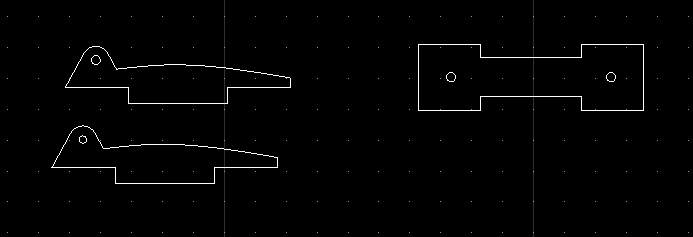
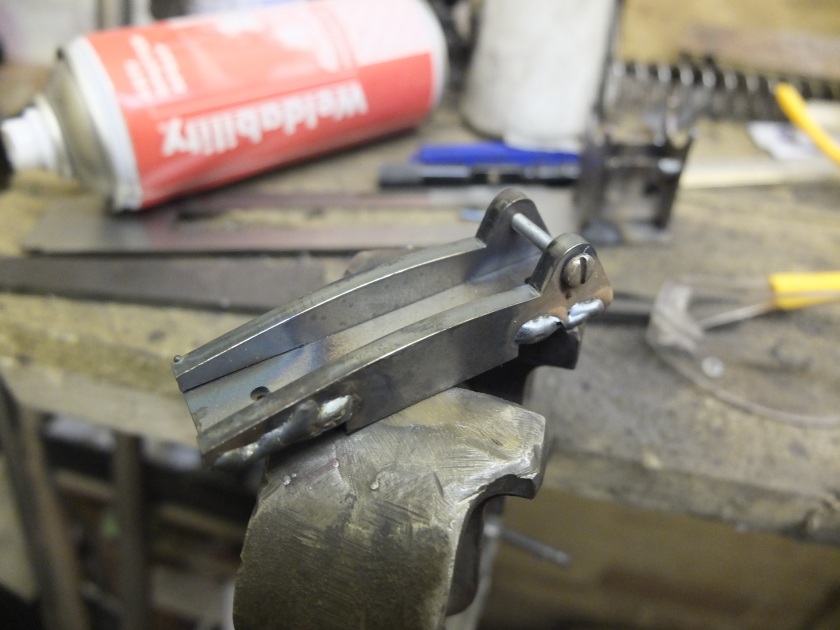
























 At this point, the action sat well enough in the receiver. By the taking of the next photograph I had also welded in the nut into which the bolt that holds the buttstock in place is screwed.
At this point, the action sat well enough in the receiver. By the taking of the next photograph I had also welded in the nut into which the bolt that holds the buttstock in place is screwed.













